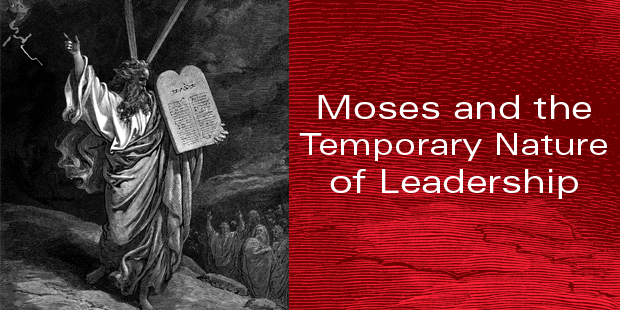I completely agree with Bill Hybels.
The best thing you can bring to your team as a leader is your energy.
This is true not just for your team, but for your family for your friends…for life.
Great leaders seems to have a reservoir of emotional, spiritual and relational energy that’s contagious.
And yet, if you’re like me, you struggle with your energy level on a regular basis.
I think everyone does. I’m not sure there are exceptions.
So how do you become one of those leaders who has energy on more days than you don’t?
A few simple disciplines can turn the situation around for you quickly…starting today.
To really bring your best every day, try these 11 things:
1. Get 7-9 hours of sleep a night
Most of us need far more sleep than we’re getting. You will be tempted to sleep less because you have so much to do. Do the opposite. Get to bed on time, and you will wake up refreshed.
Something that would have taken you 3 hours to do in a dazed state might only take you an hour when you’re fully alert. You’ve actually saved time by sleeping more.
Not convinced? Michael Hyatt even makes an incredible case for the utility of naps in leadership here.
2. Exercise regularly
Yep. I fought this for years too. But not anymore.
The summer, I’m doing an average of 5-6 hours a week cycling. I realize that’s just over half a work day…cycling.
But it makes me a better thinker, and the ideas I generate on those rides are often far better than the ideas I generate watching a blinking cursor behind a screen. Since a big part of my job is generating content and thinking, I find exercise directly makes me a better leader.
Plus I’m down 30 pounds from 6 years ago. That alone makes me attack life with more vigour.
3. Eat better
I resisted this for years too, but I’ve made big changes in my diet.
For me and for many others, what I eat has a direct impact on my energy level.
I recently cut added sugar out of my diet and experienced a direct energy boost. No more sugar crashes. I’ve also cut out grains and other high glycemic carbs. (If you want to know what regimen I followed, it’s the Whole 30 plan.)
4. Start your day with God
Your first hour or two matters so much. I start my day with the Bible and prayer…and cultivate a closeness with God that is with me throughout the day.
When I miss it, I feel it.
I realize the night hawks will struggle with this, but to me starting a day with Christ anchors it in Christ. So personally, this is a real help.
5. Have some fun
Fun is work for me. It is for many leaders. But you need to pull yourself away from the keyboard or office and enjoy life.
Have a picnic. Hang out with great friends. Do something active. Cycling is fun for me, so is taking pictures, going for hikes, travel and being around family and other fun people.
You need to figure out what’s fun for you.
6. Develop a hobby
This is a close cousin of fun. Many people who lack energy lack a hobby. You need something to turn your attention away from work so you can go back to work refreshed.
I write this blog as a hobby and cycle.
7. Spend time with people who energize you
Be honest, some people energize you and some people drain you. The challenge with leadership (and especially ministry) is that you can end up around a lot of people whose needs leave you drained at the end of the day.
It’s a good idea to make even a short list of people who energize you and then make sure you get around them regularly, whether that’s for coffee, breakfast, or even a phone call.
Only spending time with people or issues that drain you leaves you feeling drained.
8. Schedule white space
I realize I write about creating white space a lot. White space is simply space on your calendar with nothing but time to think and work on your ministry, not in it.
But I write about it because so few leaders set aside time to think.
When I have white space, I can run back into the every day of leadership again with renewed energy and passion.
9. Confess your sins
Bet you didn’t expect to see this on the list. But it should be.
Often I can get upset with other people which interferes with my ability to relate to them. Often, I discover I was part of the problem (surprise). If I confess my sins regularly, I am more able to step into the day with a fresh, generous and open perspective.
Surprisingly, the bible makes a direct link between unconfessed sin and a lack of physical energy.
10. Do your most important work first
One of the reasons you get agitated later in the day is because people knock on your door needing something, and all you can think of is “but I have to get X project done”.
Well what if you did X project first thing in the morning?
If you get the most important tasks for the day done first, then the interruptions that come later will feel less like burdens and more like opportunities.
11. Take a quick break
Get up and walk around. Go for a quick ride at lunch. Go for a walk. Grab a coffee.
I find that when I have a day of meetings, breaks like this (even if they’re only 90 seconds or 5 minutes) allow me to tackle what’s next with renewed energy.
I’m still learning about how to bring my best energy, but I do know this: when these 11 things are present in my life, I bring much better energy to whatever I’m doing.
>>Here’s a challenge. Why not implement three changes starting today, and see if you notice a change within 48 hours. Maybe it’s just going to bed earlier, or ditching the soft drink, or getting out for a walk or getting up earlier to have some time with God.
But watch what happens to your energy as a result.
Go ahead. Pick three and try them out.
In the meantime, some of you have ideas too.
How about you? What fuels your energy?
Read more from Carey here.

Tags: Leadership Development, Leadership Practices, Leadership Productivity, Personal Leadership
|
What is MyVisionRoom? > | Back to Leadership >




































